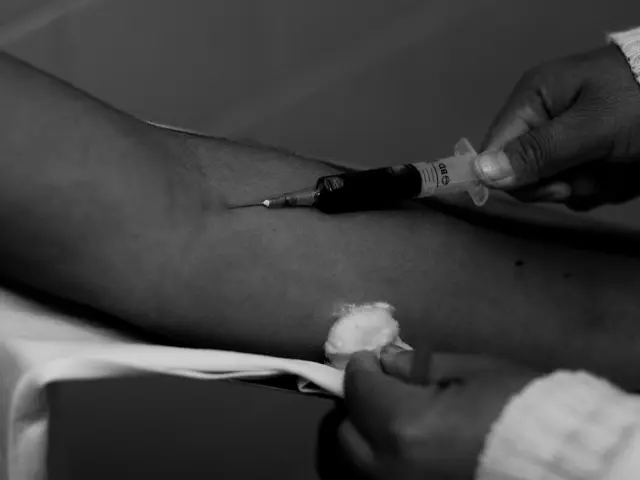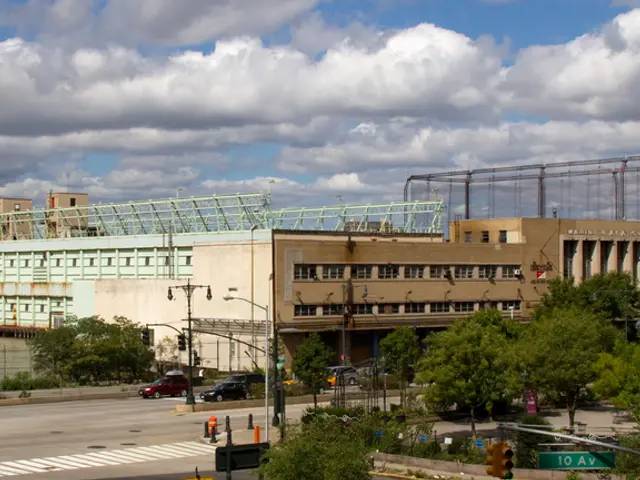Unraveling Brain Stroke Mechanisms: Investigating Its Physiological Causes
Cerebral infarction, commonly known as a stroke, is a medical condition that results in the disruption of blood flow to a specific area of the brain, leading to cell death and potential neurological deficits. This article aims to provide a detailed breakdown of the two main types of cerebral infarction - hemorrhagic and ischemic - their causes, effects, and treatment strategies.
---
### 1. Types
Cerebral infarction can be classified into two main types: hemorrhagic and ischemic. Hemorrhagic cerebral infarction is caused by the rupture of a blood vessel in the brain, leading to bleeding within the brain, while ischemic cerebral infarction occurs due to arterial occlusion or stenosis that restricts blood flow, leading to brain cell death from oxygen deprivation.
#### Hemorrhagic Cerebral Infarction
Hemorrhagic cerebral infarction includes subtypes such as intracerebral hemorrhages (bleeding within brain tissue, most common) and subarachnoid hemorrhages (bleeding into the space between brain and skull due to ruptured aneurysm).
#### Ischemic Cerebral Infarction
Ischemic cerebral infarction has several subtypes, including atherothrombotic occlusion (large artery blockage), embolic infarction (blood clot originating elsewhere), lacunar infarction (small artery occlusion), and hemodynamic stroke (reduced cerebral blood flow in watershed zones).
---
### 2. Causes
#### Hemorrhagic Infarction
Primary causes of hemorrhagic infarction include high blood pressure, aging and fragile blood vessels, ruptured cerebral aneurysms, and abnormal blood vessels.
#### Ischemic Infarction
Ischemic infarction is primarily caused by artery narrowing/clogging by fatty deposits (atherosclerosis), blood clots (thrombus or embolism), large artery atherothrombosis, small vessel occlusion, and hypotension reducing cerebral blood flow.
---
### 3. Effects and Symptoms
#### Hemorrhagic Infarction
The effects of hemorrhagic infarction include blood toxicity causing brain cell death in the affected area, symptoms often including headache, vomiting, coma, or stupor (more common than ischemic).
#### Ischemic Infarction
Ischemic infarction typically leads to sudden neurologic deficits based on the affected brain area, with symptoms such as weakness, speech difficulties, sensory loss, depending on the infarct location. Unlike hemorrhagic infarction, ischemic stroke usually does not cause a significant headache.
---
### 4. Treatment Strategies
#### Hemorrhagic Infarction
Treatment for hemorrhagic infarction includes intensive care monitoring, surgery to remove blood clots or repair ruptured vessels, blood pressure control, and supportive care to reduce brain swelling and prevent complications.
#### Ischemic Infarction
Rapid reperfusion therapy is critical for ischemic infarction, with intravenous thrombolysis with recombinant tissue plasminogen activator (r-tPA) within 4.5 hours of onset and mechanical thrombectomy for large vessel occlusion up to 24 hours if salvageable brain tissue is present. Other treatments may include antiplatelet therapy, anticoagulants, carotid endarterectomy or stenting for secondary prevention, depending on the cause. Dedicated stroke unit care improves survival and function.
---
### Summary
Hemorrhagic infarctions (13% of strokes) require urgent control of bleeding and often surgery, while ischemic infarctions (about 85% of strokes) result from blocked arteries, with early thrombolytic therapy and mechanical clot removal aiming to restore blood flow and minimize damage. Both types lead to loss of functions controlled by the affected brain region, commonly affecting speech, movement, or memory, and the outcome depends on timely diagnosis and treatment.
It's essential to note that stroke survivors may face challenges in performing activities of daily living and may exhibit altered emotional responses, such as heightened irritability, mood swings, or emotional lability. Adopting a healthy lifestyle, including maintaining a balanced diet, engaging in regular physical activity, and avoiding tobacco use, is integral to stroke prevention and management.
References: [1] American Heart Association. (2021). Understanding Stroke: Types, Causes, and Symptoms. Retrieved from https://www.heart.org/en/health-topics/stroke/understanding-stroke/types-of-stroke [2] National Institute of Neurological Disorders and Stroke. (2021). Brain Attack: Understanding Stroke. Retrieved from https://www.ninds.nih.gov/Disorders/All-Disorders/Stroke-Information-Page [3] Mayo Clinic. (2021). Ischemic Stroke. Retrieved from https://www.mayoclinic.org/diseases-conditions/ischemic-stroke/symptoms-causes/syc-20354306 [4] National Heart, Lung, and Blood Institute. (2021). Stroke: Hope Through Research. Retrieved from https://www.nhlbi.nih.gov/health-topics/stroke-hope-through-research
- Promoting mental health and well-being in the workplace is crucial, especially for those who have experienced a cerebral infarction, as it can help manage anxiety and depression associated with mental health issues that may arise post-stroke.
- Focusing on health and wellness can extend beyond mental health; incorporating fitness-and-exercise, skin-care routines, and proper nutrition into one's lifestyle can significantly contribute to overall health and recovery.
- Therapies-and-treatments, such as occupational therapy, speech therapy, and physical rehabilitation, play an essential role in helping stroke survivors regain lost motor and speech functions.
- When it comes to stroke prevention, science reveals that maintaining a healthy lifestyle, like adhering to a Mediterranean diet, engaging in regular physical activity, and avoiding tobacco use, can reduce the risk of experiencing a cerebral infarction.
- In addition, managing medical-conditions, such as high blood pressure, high cholesterol, and diabetes, is crucial for stroke prevention, as these conditions can increase the risk of stroke occurrence.
- To ensure that everyone, regardless of age or income, has access to quality stroke care, support for Medicare and other health insurance policies is vital, as they help cover the costs associated with stroke treatments and long-term care.
- On a broader scale, workplace-wellness programs can foster an environment that prioritizes mental health, physical health, and overall well-being, helping employees manage stress, promote a positive mindset, and encourage proactive steps towards maintaining good health.








